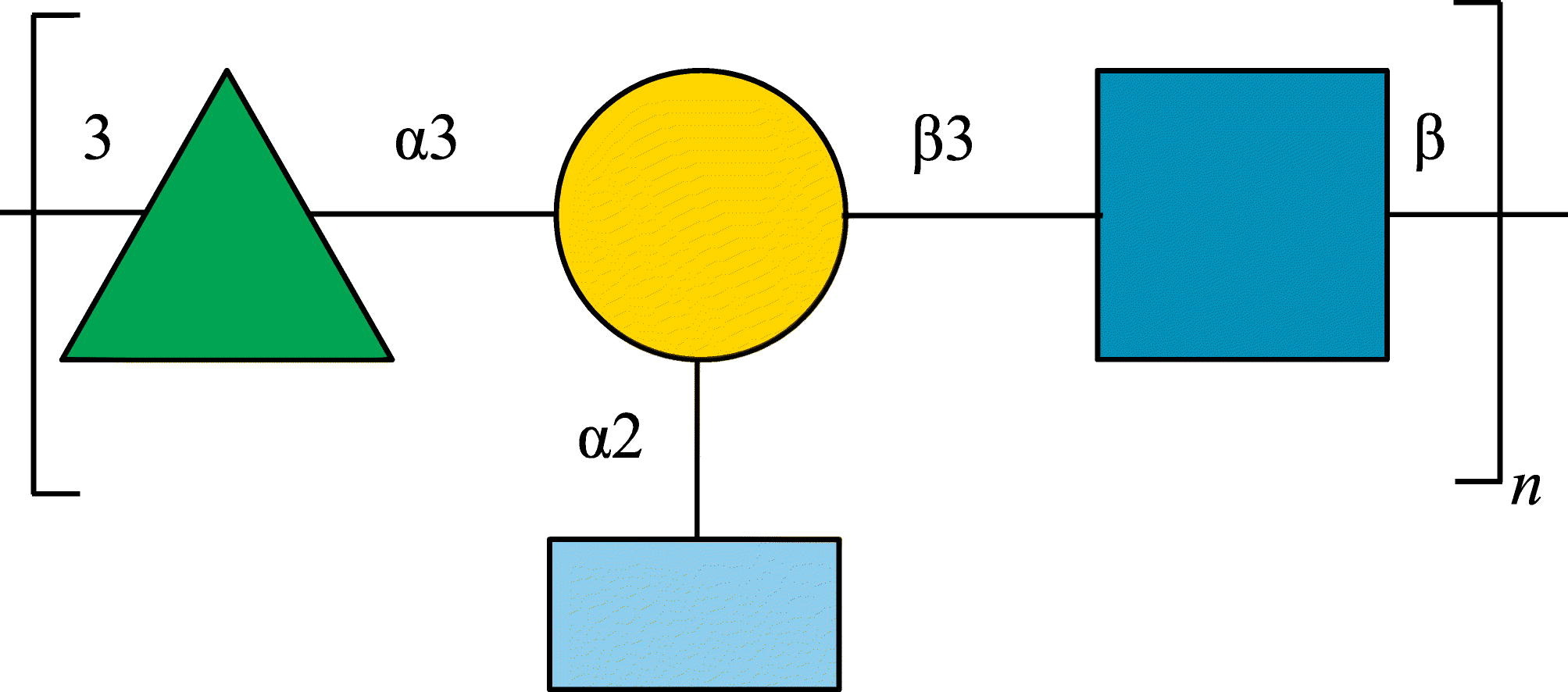Авторы: Velichko N.S., Kokoulin M.S., Sigida E.N., Кучур П.Д.,,, Fedonenko Y.P.
Abstract
The lipopolysaccharide (LPS) of Herbaspirillum frisingense GSF30T (HfGSF30), a non-pathogenic diazotrophic endobiont, was isolated by phenol-water extraction from bacterial cells and was characterized by chemical analyses and SDS PAGE. The O-specific polysaccharide (OPS, O-antigen), obtained by mild acid hydrolysis of the LPS, was examined by sugar and methylation analysis, along with 1H and 13C NMR spectroscopy, including 2D 1H,1H COSY, 1H,1H TOCSY, 1H,1H ROESY, 1H,13C HSQC, and 1H,13C HMBC experiments. The OPS was found to consist of branched tetrasaccharide repeating units of the following structure:

This structure is unique among the known bacterial polysaccharide structures. Analysis of the HfGSF30 genome showed that it contained a set of sequentially arranged operons (presumably a cluster of genes) associated with the O-antigen. Amino acid sequence analysis using the BLAST program demonstrated the specificity of this putative cluster for Herbaspirillum spp. The genes responsible for the biosynthesis of the OPS of HfGSF30 were dispersed in the genome, constituting small operons. A putative O-antigen gene cluster of HfGSF30 was identified and found to be consistent with the OPS structure.

Keywords: bacterial polysaccharide structure; O-specific polysaccharide; colitose; Herbaspirillum frisingense; O-antigen genes; O antigen.
DOI: 10.1016/j.ijbiomac.2020.06.093.
Read Full: https://pubmed.ncbi.nlm.nih.gov/32553974/.